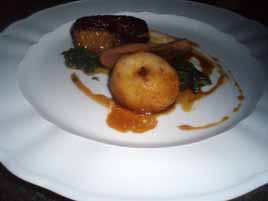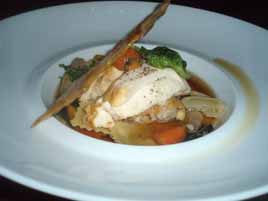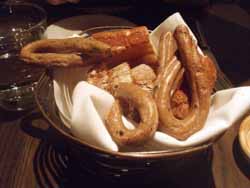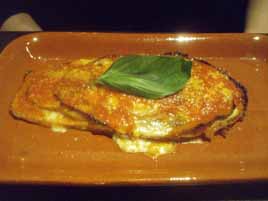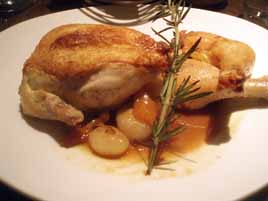Chutzpah: Colicchio & Sons is now Prix Fixe
 Thursday, February 18, 2010 at 03:45PM
Thursday, February 18, 2010 at 03:45PM Update: After less than a month, citing customer complaints, Colicchio & Sons returned to its original à la carte format.
 Starting today, the month-old restaurant Colicchio & Sons has switched from an à la carte menu to a $76 prix fixe. (The casual, no-reservations front room still serves a more rustic ALC menu.) We cannot recall such a switch this early in a restaurant’s life.
Starting today, the month-old restaurant Colicchio & Sons has switched from an à la carte menu to a $76 prix fixe. (The casual, no-reservations front room still serves a more rustic ALC menu.) We cannot recall such a switch this early in a restaurant’s life.
The move signals that business has been strong, and that Colicchio now wants to focus on getting a three-star review. Of course, it also means that critics will have their knives out if Colicchio fails to deliver, as every restaurant with a prix fixe that high either has three stars or a fairly damning two-star review.
We were disappointed in Colicchio & Sons. More than that, we felt that conceptually it was a two-star place, even if it had served us a better meal than it did. To give two recent data points: the opening prix fixe at Corton was $77, but Corton has always executed at a far higher level than this place aspires to. The opening prix fixe at Marea was $89, but that was for four courses, and you could still order à la carte.
In short: Tom Colicchio thinks his restaurant belongs in some pretty high company. Now, we’ve no doubt that Colicchio can cook as well as Paul Liebrandt and Michael White. But Liebrandt and White have much nicer restaurants, and they have far fewer distractions. Colicchio has a television show to worry about, and he supervises a much larger restaurant empire than White. Liebrandt, of course, is at Corton full time.
So there’s some chutzpah in switching to a prix fixe while the restaurant is still finding its sea legs. We’ll soon find out how smart that is.
I have to share one funny comment on my unfavorable review of the restaurant. A reader named Joe wrote:
After three weeks you have the audacity to rate this restaurant. Immediate gratification and expectations of premature perfection border on insanity. Give the restaurant a chance to begin to stand on its legs before you cut its legs out from under them. Shame on you!
I mounted three main defenses to the review. First, any restaurant that is open to the public, and is charging full price, is fair game to be praised or criticized. Colicchio isn’t exactly new at this. If he didn’t think he was ready, he shouldn’t be open.
Second, the restaurant’s response to the most damning of its mistakes (an entrée served cold) was unacceptable. There are right ways of handling this, whether you’ve been open one day or ten years.
And finally, I don’t exactly think Colicchio was quivering in his boots because New York Journal had “cut out its legs from under them.” When, just a week later, the restaurant switches to an expensive prix fixe, I would say my point has been proven.
 Colicchio & Sons,
Colicchio & Sons,  Tom Colicchio in
Tom Colicchio in  Restaurant Industry
Restaurant Industry 















